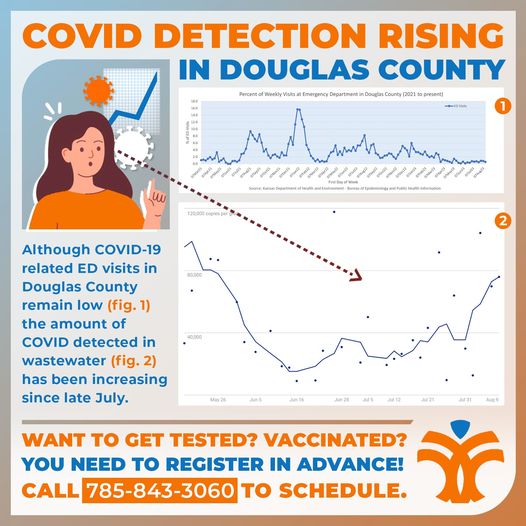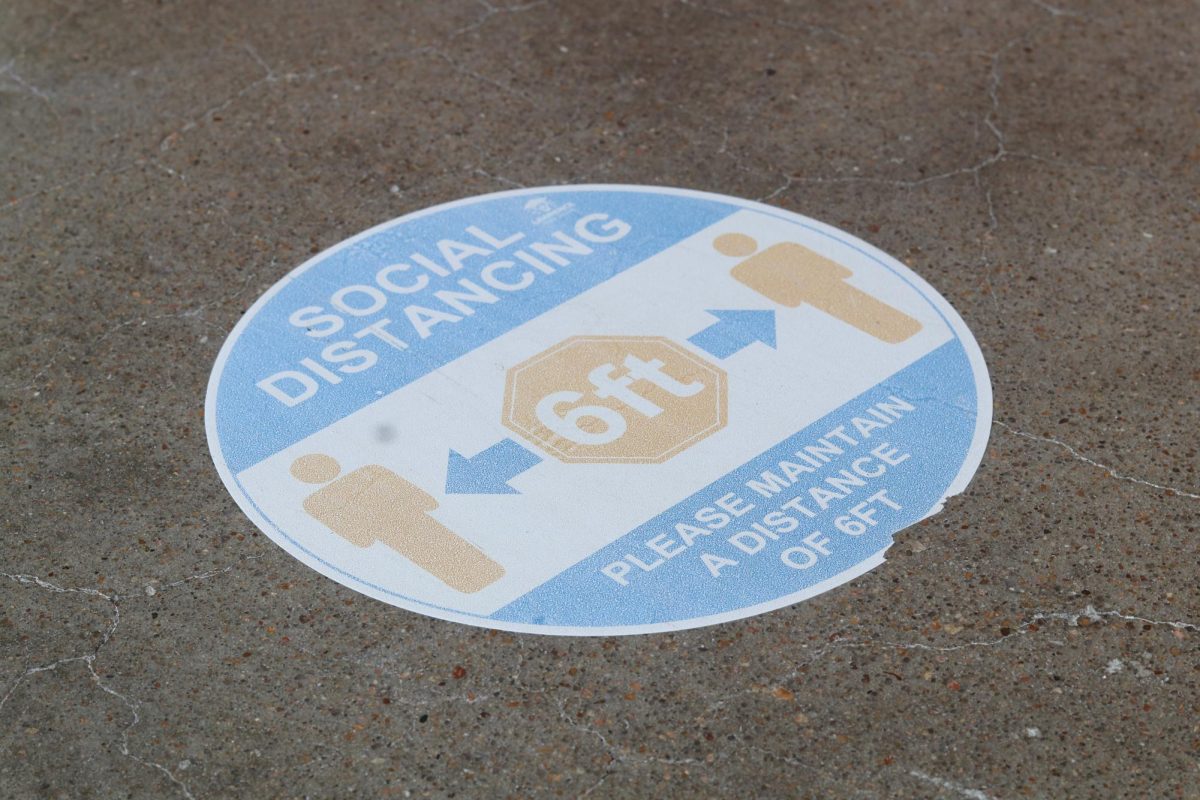As July came to a close, Kansas experienced a COVID-19 summer surge — only days before school started.
With exposure sources such as waterways and airborne germs, weekly US positive testing rates have increased to 15% as of August 19, according to the Center for Disease Control and Prevention. With students entering classrooms again, exposures can easily lead to rising case counts in Douglas County.
A new variant is on the rise, EG.5, also known as the Eris variant. Data is showing that the strain is currently infecting people at rates higher than any other strain currently, according to Scott Roberts at Yale Medicine.
“There is nothing fundamentally different about this strain compared to other strains in terms of how we protect ourselves,” Roberts said. “I predict that this will lead to an increase in cases, but it will be less than that of prior waves since we have so much more immunity in our communities now.”
The symptoms are on average no different from other variants, such as the Omicron strain. According to experts, Eris is much more contagious due to our lack of immunity.
“The virus has mutated,” Roberts said. “It is slightly different from the other recent strains and can bypass our immune defenses a little bit easier.”
Hospitalizations are the only way to count cases in Douglas County specifically, now that the CDC does not count daily cases but instead hospitalizations and deaths. There have been 26 hospitalizations in the county since August 19 with a 13.2% test positivity rate.

This school year marks the second school year with no requirements on masking. Less restrictions oftens leads to more cases even with built up immunities, sparking some LHS teachers to start wearing masks again.
“I know I’ve started wearing mine again, I know some other teachers are too,” Lawrence High nurse Carol Casteel said. “Plus, we don’t have to send out those emails anymore or quarantine like we used to.”
As more and more teachers become aware of the strain, many are raising concerns over the possibility of students missing class.
“I’m worried as the year goes on, we’re going to see more and more kids missing school,” graphic design teacher Jennifer Dixon-Perkins said. “Plus my students are in a technology class, with no access to laptops at home to do their work they’re missing. It just raises all sorts of issues.”
Individuals like Dixon-Perkins with autoimmune diseases remain at highest risk for COVID, especially those working in classrooms with no restrictions in place.
“With me, I have a weakened immune system. It’s scary to hear that it’s back,” Dixon-Perkins said. “It makes you want to be more diligent in a world with no more restrictions.”
If a student or staff member is feeling sick, take-home tests and masks are available in the nurse’s office.
“They can always make sure to get vaccinated, mask too,” Carsteel said. “If they’re starting to feel sick, get tested, go home, and then it’s still the same thing as always.”




